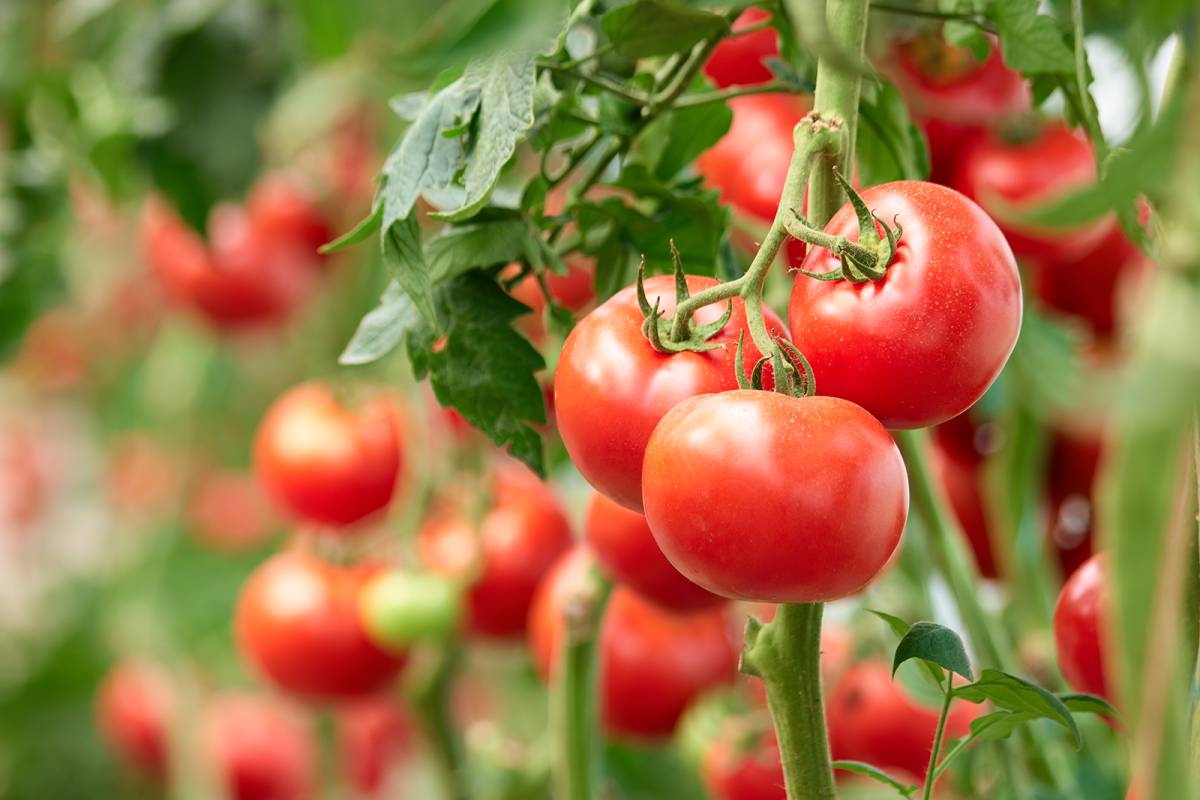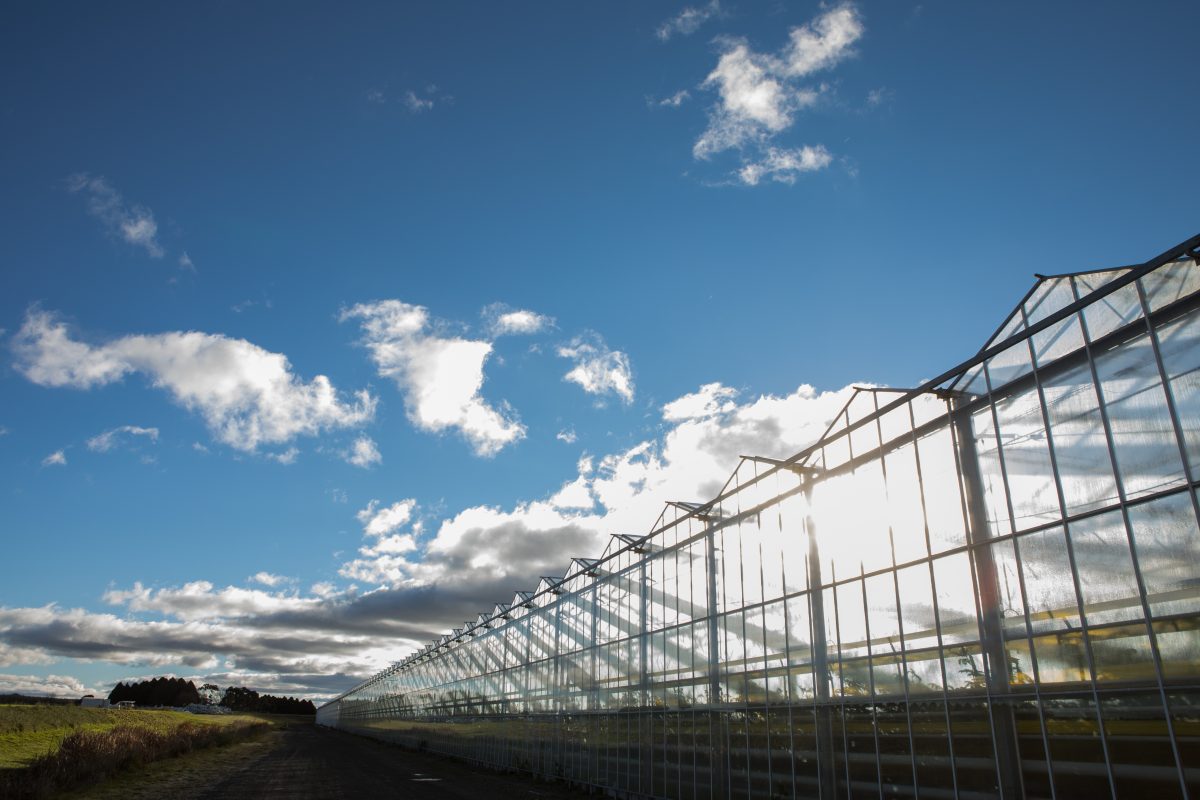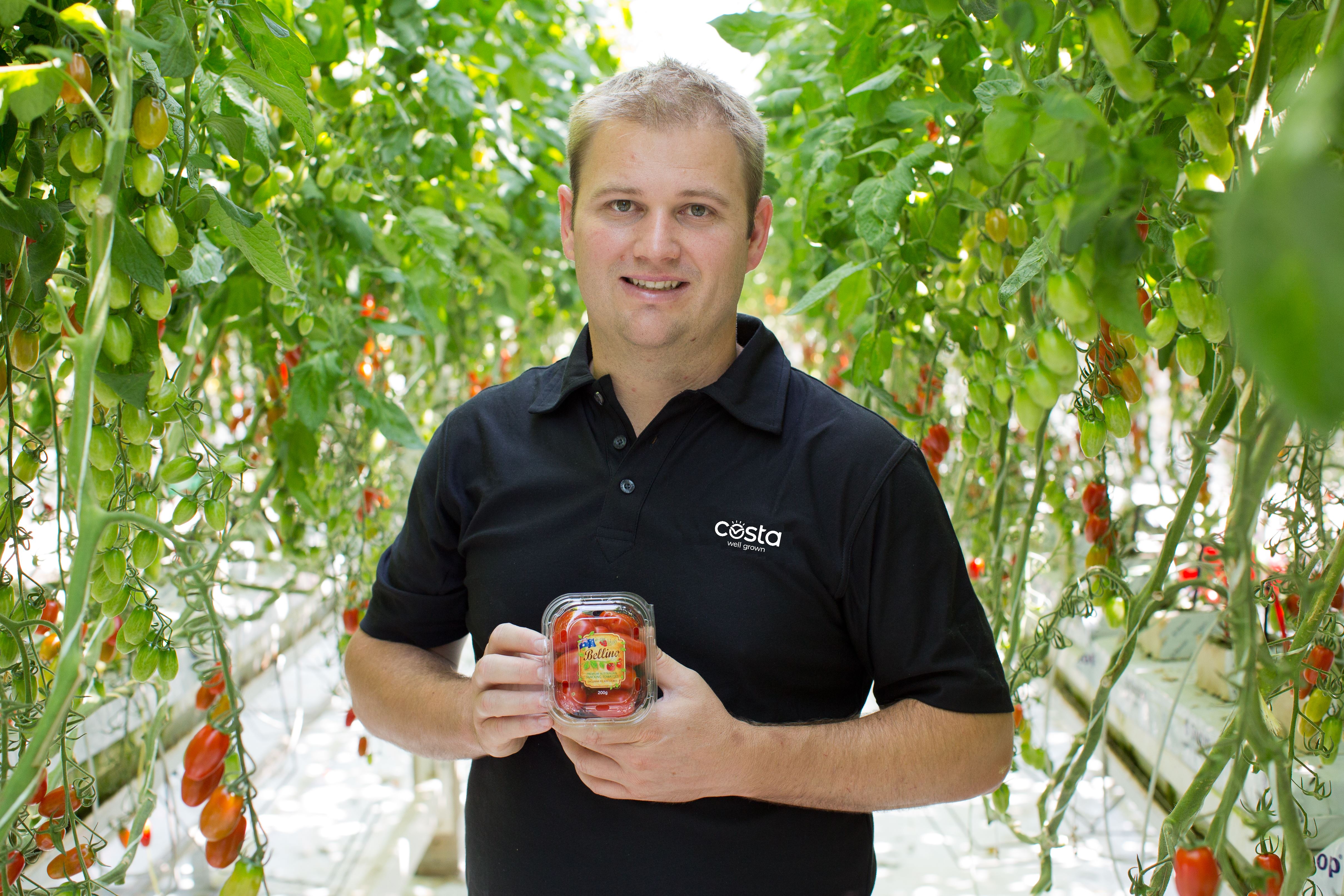Traditionally, crop production systems in large controlled-environment facilities are high-input and resource- and capital-intensive. Optimising inputs – chemicals, nutrients, water, electricity, CO2 – is a major avenue for improving crop yield and quality, at the same time reducing wastage of precious, increasingly costly resources.
CO2 levels in controlled-environment facilities are particularly critical for crop growth and yield, but defining optimal levels to manage yield in controlled environment cropping systems is challenging. Production at sub- and supra-optimal CO2 incur crop yield, environmental and economic penalties.
Costa Group grows a range of premium truss tomatoes in one of Australia’s largest and most advanced glasshouse facilities in Guyra, New South Wales. Costa is keen to optimise its production settings to reduce its dependence on coal-fired operations and shrink its carbon footprint.
To facilitate this process, Costa has teamed with scientists at University of New England (UNE), NSW Department of Primary Industries (DPI) and the Australian National University (ANU) under FFS in a four-year, multi-stage project titled ‘Managing CO2 levels in controlled environment cropping systems to optimise yield’ (‘CO2 in protected cropping’).
The goal of the UNE-led project team is to help Costa minimise its CO2 inputs while maximising crop production, improving the operation’s sustainability and boosting yields. Its primary aim is to define optimal CO2 levels for tomato production in high-input controlled environments such as Costa’s tomato glasshouses. The team is also looking to quantify genotypic variation in tomato performance under the CO2 growing conditions defined as optimal. A further purpose is to train and graduate a PhD student with knowledge and experience of the Australian horticulture industry and high-level expertise in controlled environment crop production.
The four-year, three-stage project will be led by UNE’s Dr Onoriode Coast with DPI’s Dr Suzy Rogiers, ANU’s Associate Professor Dani Way, UNE & DPI’s Professor Susanne Hermesch and Costa’s Paul Butterworth. The project team has recruited a full-time doctoral researcher, supported by an Industry PhD scholarship funded by Costa Group, UNE and FFS. The doctoral candidate will join UNE in Armidale, NSW, in August, and undertake a 12-week industry placement at the Costa Guyra glasshouse facility as part of their PhD program.
The ‘CO2 in protected cropping’ project is set to commence on 30 June 2023 and will run until 31 May 2027.

Dr Onoriode Coast in his office at University of New England, Armidale, NSW. Credit: University of New England
Why is it important?
Tightly controlling environmental variables underpins crop yield and quality. Optimising variables such as leaf and whole plant CO2 levels can increase the yield of many horticultural crops in controlled-environment facilities.
To date, however, little is known about precisely how much CO2 is required to maximise productivity in these glasshouse crops. Integrating knowledge of optimal CO2 levels in advanced indoor cropping systems could further increase production efficiency.
“Adding CO2 into our glasshouse is an increasing cost year on year,” says Butterworth, Technical Manager for the Costa glasshouses.
“While the benefits of increased CO2 injection into high-tech glasshouses are well documented, the efficient use of the injected CO2 is not.
“Improving the timing of when CO2 is applied into our glasshouses will not only reduce cost but will also have the potential to increase fruit quality and plant growth.”

Premium truss tomatoes in Costa Group’s advanced commercial production glasshouses. Credit: Costa Group
The research
“Plant leaves present the major interface between the plant and atmospheric CO2,” Dr Coast explains. “CO2 diffuses through stomatal pores on leaf surfaces and increases intercellular CO2 (Ci), which is consumed by mesophyll cells during photosynthesis.
“The response of photosynthesis (specifically, net assimilation, A) to changes in Ci – that is, the A–Ci curve – establishes a strong relationship between photosynthetic biochemistry, plant carbon economy, yield and the prevailing environmental conditions experienced by the plant.”
The four-year PhD project will involve a series of experiments conducted at UNE and in Costa’s Guyra tomato glasshouses. Tomato cultivars for testing will be supplied by Costa.
Stage 1: Testing ‘leaf-level’ CO2 response
In Stage 1, the team will test leaf-level CO2 response in UNE’s glasshouse facility and temperature-controlled plant growth chambers. Using Licor 6400XT – a state-of-the-art portable photosynthesis system for measuring gas exchange and chlorophyll fluorescence – they’ll develop leaf-level CO2 and light response functions to determine optimal leaf intercellular CO2 concentrations (Ci) for tomato production.
The team will also investigate genetic variation in different tomato cultivars’ Ci responses to changes in ambient CO2.
The final step in Stage 1 will be to conduct physiological and biochemical assays on plant tissues to ascertain stomatal conductance, nitrogen content and photosystem II thermotolerance, increasing our understanding of the mechanistic basis of tomato plants’ response functions.
Stage 2: Determining variation in whole-plant CO2 growth conditions
In Stage 2, the team will grow whole tomato plants in the replicated CO2-controlled glasshouse bays at UNE – each set at a different CO2 concentration based on results from Stage 1 – and quantify the plants’ performance with respect to physiology, yield and quality. They’ll use data from these experiments to model and more precisely define optimal CO2 concentrations for tomato production.
Stage 3: Monitoring crop performance within Costa’s commercial production system
In Stage 3, the team will perform a series of trials in Costa’s Guyra glasshouses to monitor tomato plants’ CO2 uptake, photosynthetic rate and other performance indicators, relating these to plant growth variables to validate – and, potentially, apply – the project findings within Costa’s commercial production system.
“One challenge for this project is scaling up from leaf-level experiments in laboratories to crop-level performance in a commercial glasshouse,” Dr Coast says.
“This, though, can be overcome by the intermediate step in our project of working at crop levels in UNE glasshouses.”

Costa Group’s vast Tomato Exchange glasshouse complex in Guyra, NSW. Credit: Costa Group
Real-world impact
If the project team can deliver a defined optimal CO2 level for growing tomatoes in advanced glasshouse facilities and quantify genotypic variation in tomato performance under optimal CO2 growing conditions, it will help horticulture producers (including, in the first instance, Costa) to optimise their production settings to minimise resource input and maximise crop production, thereby improving growers’ eco-credentials, productivity and profitability.
On a wider level, the team’s research will contribute to collective understanding of horticultural crop responses to CO2 in controlled environment cropping systems, producing knowledge – including protocols and algorithms – that, once applied, may lead to commercialisable IP.
Methods developed and results generated by the project team may also be transferable to other climate-controlled crop production situations.
“Potential benefits from this research will not only include the possibility of improved production, fruit quality, reduced waste and decreased costs, but also may lead into improved practices to further strengthen the already strong sustainability practices observed in glasshouse production,” Butterworth says.
“More broadly, this research may lead to knowledge which will enable alternative sources of CO2 to be utilised within protected cropping.”
The project will also help upskill the next generation of innovators in this emerging field by equipping the participating PhD student with high-level, hands-on expertise in controlled-environment horticulture at commercial scale.
Down the track, there is potential for the PhD involved to join Costa Group, says Butterworth: “At Costa, we are always looking for great people to join the team who show enthusiasm for sustainable food production.”
Lead image: Costa Group Technical Manager Paul Butterworth in the company’s tomato production glasshouse in Guyra, NSW. Credit: Costa Group


